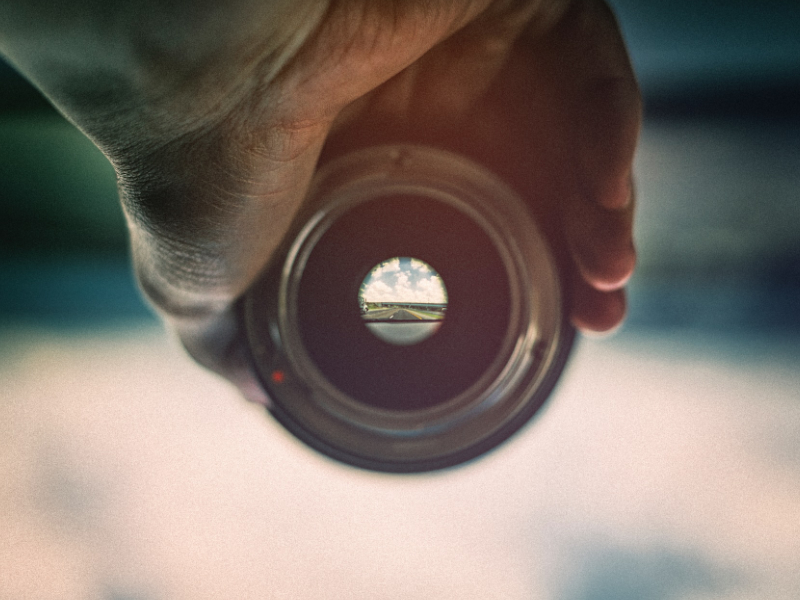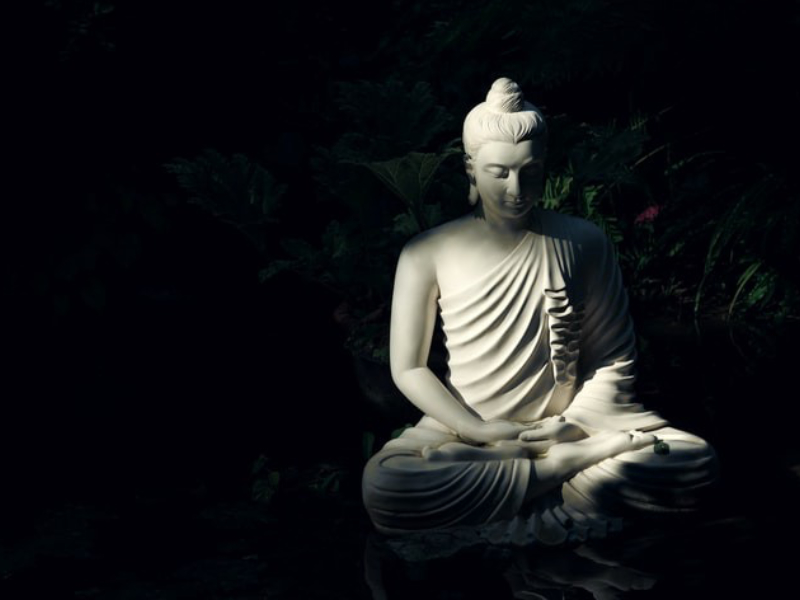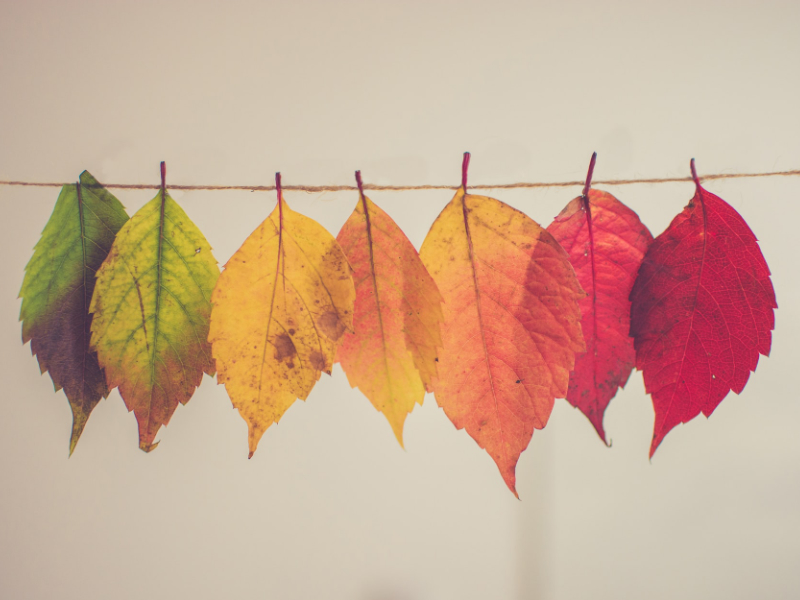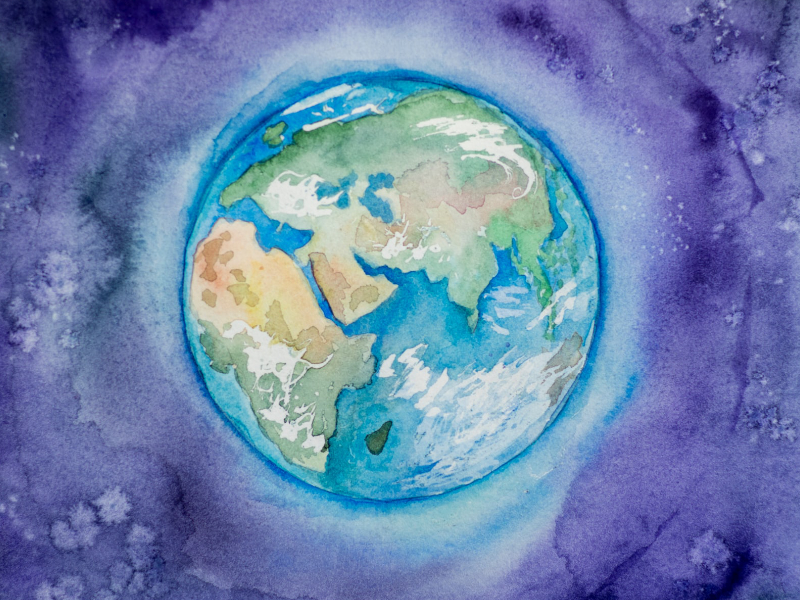Concentration & Unity
– The Noble Eightfold Path | Concentration –

“WHAT ARE OUR ROOTS?” my Snow Leopard would ask me as we traversed forests and rock to reach the heavens from mountaintops. I love this tool, which has become a mantra for me, because it keeps me sharp and pointed. It allows me to follow the threads of conversation and threads of my own thoughts and understanding. It sustains my concentration, which brings a stableness and a continuity to my being and experience. And this in turn leads to a calm, connected, and receptive kind of clarity.
The Buddha said a mind without concentration is like a fish out of water, flipping around with no control. We need it to stick with our goals, tasks, and aims, and to harmonize our words and actions with these aims. We need it to stay grounded and centered in our motivations, frameworks, and understanding. We need it to bring stability to our journey, to bring clarity, continuity, and harmony to our experience, to bring unity to our life.
Sadly, I fear concentration is waning in our culture. We are constantly ripped and pulled apart by distractions. We juggle our attention at work with emails, Slack, Zoom, text messages, DMs, and other platforms. We manage our personal texts and emails. We endlessly scroll through and stay up with our notifications from Metta, Instagram, Medium, WhatsApp, WeChat, TikTok, news sources, and the many other platforms that fight for our attention. All the while we have music, a podcast, or an audiobook in our ears, or maybe even a show or movie playing in the background.
By the time we transition from work to home, we are utterly and entirely fractured, thousands of pieces of ourselves scattered across the open field of awareness. And many of us even have to remain plugged into work through our phones. It makes it very difficult to be present, worship our partners and children, and shower them with our full and undivided attention. It leaves us in disharmony.
Something has got to give here. It won’t be easy to fix this as a culture, but we need to work out a different way. We need to bring our focus back. We are so lost in the weeds that we have little clarity in our moment-to-moment experience around our deepest aims and intentions. I fear this has led and will continue to lead to much of our suffering, to many feelings of isolation and incompleteness. It’s preventing us from staying connected with what matters most. It is leading to our own destruction.
Now, I don’t mean to place blame here, especially on those of you who are in these kinds of positions at work. I really am inviting employers to look at how their business culture is fracturing society, families, and individuals. And for what? What are your priorities? What are you making money for?
So, anyway, as we step into this final dimension of our exploration of the Noble Eightfold Path, I invite each of you — employers, employees, parents, children, partners, and friends — to hold this dimension with reverence and a willingness to see how it is affecting your own life. And then hopefully any insights you gain will allow you to find ways to bring some unity and clarity back into your life and into the world around you.
CONCENTRATION & THE NOBLE EIGHTFOLD PATH
Okay, so, what is concentration and how does it fit into the Noble Eightfold Path? Well, concentration is not an end in itself. It is a means to insight and wisdom, to love and understanding. So, it’s primary role is to provide a penetrating clarity and stability, a kind of sharp lens, to our mindfulness practice.
Concentration brings things into view. Like a lens that collects and focuses the light, concentration gathers and puts together the fractured pieces of your being. It gathers all the faculties of mind and points them at the task on hand, it points them at the objects of awareness. So, it brings a unity to awareness. And as it is sustained, it brings a stability, depth, and clarity to your mindfulness practice, to your life, and to your experience.
When this faculty is well cultivated, like a laser that can cut through steel, concentration has the potential to cut and penetrate deeply into an object of experience, it can cut through the hindrances and various distractions that constantly buffet us from all sides, providing the space and sustained focus for mindfulness to shine its light onto experience and pull more insight out of it.
Again, though, concentration alone will not bring insight. It will not give you an understanding of yourself, of your own heart and mind, and of the nature of suffering. Only mindfulness can do that. Only mindfulness can see the true nature of experience, without imposing our ‘self’ onto it. Only mindfulness can lead us to love and understanding. Only mindfulness can bring insight and wisdom.
Concentration, then, aids us along the Eightfold Path by keeping us firmly rooted in our mindfulness practice. It keeps us calm, sharp, and collected, pointed at wisdom. It keeps us safe from the hindrances and defilements, preventing us from becoming fractured and isolated. It keeps us unbroken, united, entirely whole.
Okay, great. So, how do we go cultivate concentration?
HOW TO DEVELOP CONCENTRATION?
Well, the Buddha, per usual, doesn’t leave us guessing. He lays out a clear path for us to cultivate and develop this faculty. In fact, there are two paths he provides: first, one-pointed or fixed-object concentration and, second, continuous, momentary, or fluid concentration. Let’s explore these two in turn.
Fixed-Object or One-Pointed Concentration
One-pointed or fixed-object concentration is a meditative or contemplative concentration. It fixes the mind on a single object to calm and steady the mind, to slow down the discursive and proliferating thought process.
When this one-pointed concentration is strong, we start to feel a peace in our lives that comes from an ability to focus firmly on what is in front of us, without getting agitated, unsettled, and tossed about by desires or worries, or distracted and dragged around by random thoughts.
The Abhidhamma, or Buddhist psychology, points out that this faculty, this kind of one-pointed concentration, arises to a degree in every moment of experience. If we had no one-pointedness at all, we would never be able to connect with anything in our experience. Our minds would continue to fly around and never stop for even a moment to make contact with the objects of awareness — sights, sounds, smells, tastes, thoughts, feelings, etc. So, we need this one-pointedness to unify, collect, and center all the faculties of mind—our sense faculties, our memory faculties, our perceptual faculties, our thinking and reasoning faculties, our creative faculties, etc. — on the objects of awareness.
To take a narrow example, let’s consider the visual system. When the eyes move from one object to another, which is called a saccade, there is no unity, no collection of attention, and so there is no clear picture of anything until you land on an object. Our visual experience is suspended in a way.
Saccades are very quick. A single saccade only takes about 150–200 ms to plan and execute. These quick movements allow the eyes to concentrate on different parts of the visual world to gather data, move onto different points to collect more data, and ultimately sketch and paint a cohesive, though selective, picture of the world in our minds.
The faculty of one-pointed concentration doesn’t end here, though. Once the eyes fixate on an object, concentration is still needed to gather and unify additional faculties. There is still a selective process that needs to take place since our visual system simply doesn’t have the bandwidth to focus on every object in the visual field. It needs to concentrate on what information is important. Once the eyes have landed on an object, for example, even though they are fixated on a single location, concentration is still needed to observe different properties of that same location, like color and shape.
This ties us intimately to the discussion we had in the last episode about clear comprehension because it is our underlying framework, our views and understanding, especially our aims, that orient our focus, our point of concentration. If we are in the ‘Tinder frame,’ our faculty of one-pointed concentration will gather all our faculties to focus attention on physical beauty, on facial symmetry or whatever other pleasant qualities draw your attention.
If you’re looking for a new car, your focus will land on the makes and models, the shapes and colors, of different cars on the road. If you’re looking to be pitied or viewed as a victim, you’ll concentrate on reasons to be pitied and viewed as a victim. If you’re looking for truth, beauty, and goodness in all things, you’ll find truth, beauty, and goodness. If you’re looking for wisdom, you’ll find wisdom.
“How odd it is that anyone should not see that all observation must be for or against some view” — Darwin
Again, we need this one-pointed concentration to unify, collect, and center all the faculties of mind to know the object, to keep our experience stable and centered. It is what allows for a central point of focus — the spotlight of attention.
Now, though some degree of one-pointedness is always present in order for us to know anything, as you probably know from your own experience, this faculty is often weak and unstable. The mind loves to jump, sink, swim, fly, and frolic around every which way. It loves to go chasing squirrels. We can all relate to this flighty, untrained mind. Just consider how often you get lost in thought while trying to read or focus on a task, only to find yourself down some rabbit hole before you even realize you had been thinking?
So, we need to strengthen and develop this faculty of one-pointedness to keep our mind centered.
“The mind, hard to control, flighty, alighting where it wishes, one does well to tame. The well-trained mind brings happiness.” — The Buddha, the Dhammapada
The Pali word for meditation is bhāvanā, which literally means “causing to be developed.” Just as our bodies get stronger through physical training, concentration gets stronger through mental training.
So, to cause this faculty to be developed, to strengthen and intensify it, we can make it a practice to focus the mind on a single object. Now, I know it is hard to introduce any new practice or routine into your life. So, let’s keep it simple and ‘habit stack’ this onto our already existing mindfulness practice. For the first minute or two of practice, let’s work on sharpening our focus by continually bringing attention back to a single object before we open the mind to the whole range of experience, as we do with our mindfulness practice.
The object of our concentration can be anything. It’s really less about the object and more about the focus. So, again, you can pick anything that calls to you — an image, an idea, a virtue, a word, a mind-state, or whatever. But we can also be a bit more strategic about the object we use. If, for example, your personality tends to be particularly lustful or greedy, you can contemplate the impermanence of sexual pleasure, or on a more holistic view of the human body and all its inner workings, its blood, guts, and organs.
If anger is a close companion, you can concentrate on metta, on loving-kindness, the unconditional wish that you and others be happy, that you and others be free from anger and hatred, that you be at peace. If you are restless, you can focus on a calm body of water. If you are the devoted type, you can focus on the three jewels: the Sangha, Buddha, and Dharma. If you lack fuel or motivation, you can contemplate death and the preciousness of life. If you want to improve your visual imagination, you can bring to life in your mind a seed blooming, growing, decaying, dying, and being reborn from one of its seeds. If you are often tense and contracted, you can focus on space, the space in the room or in the galaxy, or on the negative space of experience, the space between thoughts, sounds, feelings, and emotions.
And of course, a very popular place for beginners is the breath. The breath is always there and speaks volumes about your current state. It keeps you connected to the body, connected to the fluid, impermanent, and ever-changing nature of all things, with the arising and fading of each breath. And it can also promote the slowing down and stilling of thoughts, especially if you emphasize the out-breath.
And last but certainly not least, you can focus on your sila, or morality. Not in a way where you just beat yourself up over all your past transgressions, but in a way that acknowledges the good intention, the light, in you. The Buddha often taught that sila is the foundation for concentration. When we haven’t witnessed and acknowledged the good intent in us that wishes well for ourselves and others, and then established a moral framework from this foundation that keeps us pointed at living in harmony with life, it can be very difficult to grow concentrated.
Just consider honesty alone. When we’re dishonest, we have to juggle our lies. We have to remember what we said to whom and work really hard to paint a consistent picture. Usually, we just end up fabricating more and more lies to save face. Dishonesty tears us apart.
“If you tell the truth, you don’t have to remember anything.” — Mark Twain
Sila also helps us grow concentrated by preventing guilt and shame from arising, which can cause tremendous ripples in our experience. It does this by keeping us rooted in non-harm. That way, even if we do cause harm, sila can transform the guilt or shame we carry into remorse, a loving reminder that our actions impact both ourselves and the ones we love. Again, not to punish us but to keep us pointed at our aim, to remind us of the love we carry for the world.
Grounding ourselves in sila, our commitment to non-harm, we can let go of guilt. We don’t need to allow shame to become a part of who we are. We can still have remorse for those actions that hurt ourselves and others. But instead of getting lost in or identifying with the guilt or shame, we can connect again and again to our commitment of non-harm. We can really feel into our intention to live in harmony with life. This is who we are: Love. Not a small ego-based part that tells us we’re not worthy or that we’re disgusting or cruel.
Once you connect with this, whether for the first time or the thousandth, when you really touch your deepest truest intention, notice how you can be with memories of unwholesome or unskillful actions with more ease and stability. See how you can more easily learn from them and let them go. And on the opposite side, if you forget to once again establish yourself in sila, see how hard it can be to concentrate as you fall into a shame-based identity.
Sila fertilizes the soil for concentration to grow and strengthen. But again, only you can know this for yourself. So, check it out. See if the happiness, peace, and ease brought about by honesty and the absence of shame lead to a natural concentration and clarity in the mind.
Anyway, as you develop this one-pointed concentration, see what works for you through trial and error, whether it’s the breath, sila, loving-kindness, an image, or whatever. You might even find it useful to concentrate on a new object everyday. Regardless, remember, the object isn’t crucial here for what we are developing. What is crucial is that you practice consistently. So give it a go and have fun! I’m excited for you to touch new levels of peace and clarity as this faculty strengthens.
Continuous or Fluid Concentration
Okay, let’s explore the next kind of concentration the Buddha suggests we develop: continuous, momentary, or fluid concentration.
Here, rather than concentrate on a single object, we maintain a continuous awareness, of the whole ocean and its waves. We stay focused on the ever-changing contents and processes of experience, the continual arising and fading of the objects in awareness, noting each experience with an open hand, clinging to nothing, while also maintaining a seamless unity as we float on top of the ever-changing waves.
So, this too develops a powerful, steady, and penetrating attention, but one that directly supports our vipassna practice and therefore breeds insight. We apply it steadily to establish ourselves in the Four Foundations of Mindfulness: “mindful and clearly comprehending feelings, perceptions, and thoughts as they arise, persist, and pass away.”
Without this steadiness of concentration, it is easy to collapse into or identify our ‘selves’ with these feelings, perceptions, and thoughts as they arise. We take them to be who we are and then get carried away by trains of association and reactivity. But as this fluid concentration remains steady and strengthens over time, as we gain more continuity of mindfulness, we begin to experience a natural flow in our practice, a vivid, penetrating, and easeful momentum that has enough force to keep the hindrances at bay.
And eventually it will grow strong enough to break through the relative world and penetrate the ultimate nature of being, bringing forth wisdom, completing our first cycle along the path.
Consider the image of rubbing two sticks together to create a fire. If we rub the sticks together for a few moments, get tired, and then stop for a bit, rub the sticks again, get distracted and stop, rub more, and then stop because we get lost in reverie, and so on, we will never generate enough heat to spark insight. Without continuity of mindfulness, we will never be able to generate the power to go deeper, to penetrate the ultimate nature of reality, the ultimate nature of self, the ultimate nature of suffering.
Through a continuous and concentrated examination, mindful and clearly comprhending, we begin to see a microscopic level of arising and passing of every element of experience — sights, tastes, sensations, smells, sounds, thoughts, feelings, moods, and emotions. We experience directly this mind-body, we experience ourselves, as a continuous, seamless, ever-changing open field of awake awareness. The illusions of solidity and separateness dissolve beneath our feet, as we free-fall into the unborn and unbounded awareness that holds this miraculous floating world. Through a continuous concentration, we come to embody Love.
CONCLUSION
Okay, well, now that we’ve explored the two types of concentration to aid us in our pursuit of peace, love, and understanding, let me just finish out today’s episode by sharing a few tips and some words of encouragement.
First tip, have confidence in yourself. No matter what you think, no matter what the world has told you about your capacity to focus, you can become more concentrated with practice. So, believe in yourself.
Next, because so many of us — essentially all of us — have a slippery and scattered mind, something skillful you can do in the beginning is to start by simply noting whether concentration is present or not, both in your sitting and in your daily life.
“If concentration is present, acknowledge “Concentration is present in me;” if concentration is not present, acknowledge “Concentration is not present in me”
— The Buddha (Satipaṭṭhāna Sutta, trans. by Bhikkhu Anālayo)
Now, something important to note here is that the Buddha doesn’t say anything about judging yourself for not being concentrated. The practice is simply to discern the present state of mind. Here, in this non-judgmental and non-reactive space, we can simply get to know what the mind is like when it is concentrated and when it is not. Do this and I think you’ll see that awareness has a way of taking care of itself.
Another skillful approach here, as I said above, is to start your meditation with a fixed-concentration practice before moving to vipassana. This will help slow down the sporadic and proliferating thought process. It will help bring a peace and relaxed clarity to the mind, it will allow the waters of the mind to settle, so we can be more clear and receptive as we move into our vipassana practice. That’s why many teachers have new students focus on nothing but the breath for an extended period of time, whether for weeks or even months.
Now, this still won’t be easy. The mind is difficult to steady, so it will require resolve, determination, and perseverance — that is, it will require virya — to keep bringing your mind back to the object of concentration. You will need to continually apply a balanced effort, a kind of gentle return to the object of concentration, where we are settled back and relaxed as we pass through distractions or hindrances in the mind, without adding any agitation or resistance to the system.
And of course there will be times when we just feel like we can’t do it, we can’t focus, times when we feel dull, cloudy, lazy, restless, or uninspired, and we think it is impossible to practice, so we don’t even try. Just because these mind-states are present, though, doesn’t mean we can’t have a continuity of concentration. We might just need to adjust our framing here a bit. Rather than give up when our minds aren’t bright and energized, or when they feel too energized, we can simply allow awareness to open to the dullness, cloudiness, laziness, or restlessness, without trying to improve or change them. In this way, we do keep a continuity of concentration, we have a continuous awareness around our sleepiness or restlessness. With this frame, we don’t limit ourselves by thinking that concentration practice requires us to be in a certain state of mind.
Joseph Goldstein offered up a note I’ve found to be incredibly useful, which speaks to this point. When the mind is racing from thought to thought and it feels impossible to keep up and stay concentrated on anything, that’s okay. We can maintain the continuity of concentration with the simple note, “a lot of thinking,” without worrying about having to change our experience. Instead, we can be at ease with this bombardment of thoughts. “A lot of thinking.” Again, our practice is all-inclusive. It welcomes all mind states without trying to fix them.
Really, it is a simple matter of perseverance to stay open, receptive, and willing to be with each step, each breath, noting exactly how it is. Do this and concentration will grow. And as concentration grows, see for yourself, but I guarantee you will discover deeper and deeper levels of unity and harmony in your life. You will experience more and more profound states of stillness and serenity. And this will then create a kind of feedback loop.
As your focus strengthens, so will the unity in your experience, which will relax the body and mind, which will create even greater levels focus and clarity, which will lead to even higher pixels of unity and calm, and upward and upward you go.
[And as you continue to climb this upward spiral of focus, unity, tranquility, and clarity, I think you’ll also discover a sense of rapture begin to light and color your awareness, which will grow very bright before it settles into a more subtle and stable kind of joy and warmth as the concentration carves out and polishes an unrelenting equanimity into your being.
May you experience deep focus, tranquility, clarity, and unity of mind. May you embody lasting peace.
Until next time,
More Articles
“The Art of Bare Attention”
Today we’re going to talk about the ancient Buddhist practice vipassana, or insight meditation. Now, just to be clear, this is an entirely secular practice. It doesn’t require you to adopt any dogmatic beliefs…
“The Faceless Seer”
How do you hold your love? Do you hold her from stillness, with nowhere to go, with nothing to do? How do you hold your love? Do you hold her with acceptance, with open hands and arms, with unabashed…
“Everything Changes”
It’s no secret everything changes. Your experience this morning isn’t your experience now. Yet how many of us act like we really understand this? How often do we grasp onto the illusion of things…
“The Divine Connection”
How do you hold your love? Do you hold her from stillness, with nowhere to go, with nothing to do? How do you hold your love? Do you hold her with acceptance, with open hands and arms, with unabashed…






